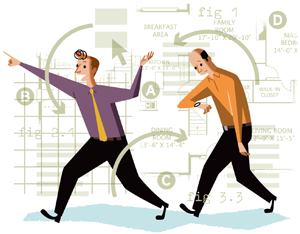The conference was held at a world-renowned hotel in Colorado Springs, Colo. The location, in fact, was my reason for attending—the conference was a bonus. Upon check-in a bellman accompanied me to my room, luggage in tow.
We arrived on the fifth floor and entered an elegantly appointed room with two large windows and a fabulous view. My first thought was to wonder how fast I could unpack and settle into the armchair with a book in front of that view.
As a so-called “road warrior,” I am familiar with the usual amenities of hotel rooms: TV remote, minibar, jetted tub operation, hotel phone use, ice machine, coffee maker, and the room service menu. In spite of this, the bellman proceeded to give an 11-minute tour of the room’s features—an unstoppable presentation that called attention to all of the above, in addition to the extra blankets in the closet and hotel stationery in the desk. My polite attempts to curtail his monologue went unheeded.
When the loquacious bellman finally left, I bolted the door and heaved a long sigh. Then I wondered how often home builders “overservice” their buyers. When is service not service? More importantly, how can you avoid exasperating your customers with overattention?
Home Buyer (Knowledge) Diversity. Home buyers have always been a mixed group, but now more so than ever before. The levels of knowledge and experience they possess range from “We’ve always rented” to “I watch every episode of House Hunters, and this will be our 29th new home.”
Gender, marital status, age, and cultural background are unreliable clues here. What does help is listening to buyers and asking direct questions about previous residences and their experiences buying or building. When in doubt, say so. You might try, “Because I don’t know how much you know, I’ll go over this in detail. Please stop me if you already know this …” or “I realize you’re an experienced new-home buyer; because our methods may vary from those you’ve worked with in the past, I’ll go over them for you—please stop me if I’m telling you things you already understand.”
Learn When to Take “No” for an Answer. At the end of a plumber’s repair appointment, he asked the homeowner (an older woman, married with grown children) if there was anything else he could do for her. She said, “No, thank you,” and the plumber closed his toolbox and walked to the front door, where he paused to say goodbye and ask again if there was anything else he could do.
At this point the homeowner became uncomfortable, interpreting this repetition as having a double meaning. She phoned her husband, who phoned the builder, who phoned the plumber, who was devastated. It turned out he was simply being “service-oriented,” as the builder had requested of all trades.



